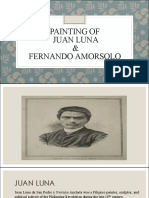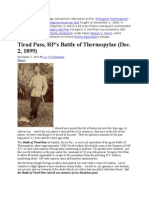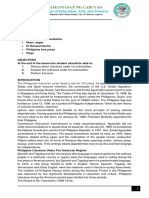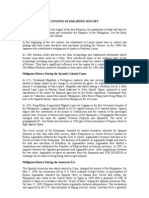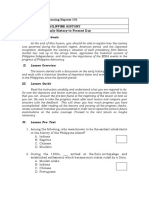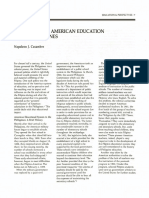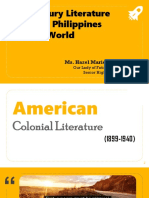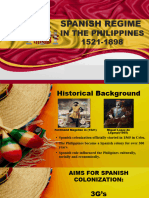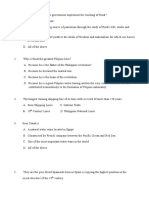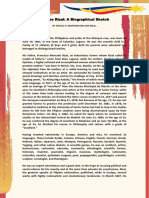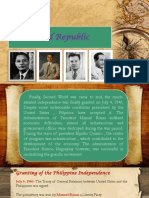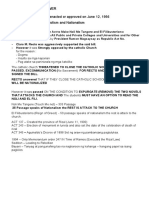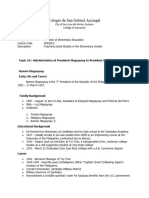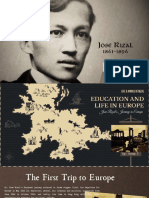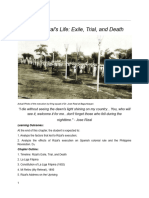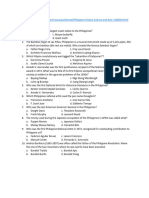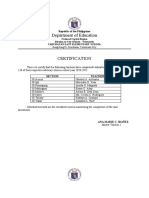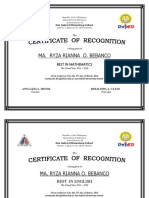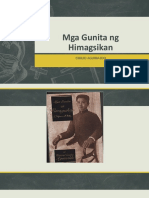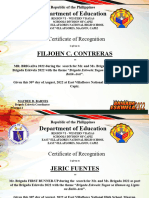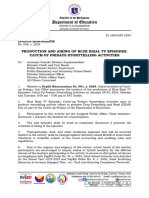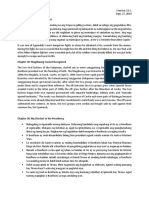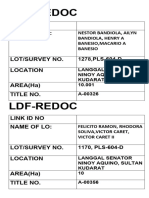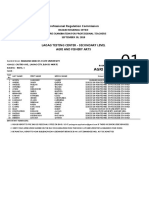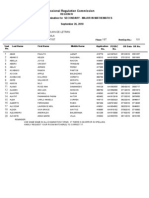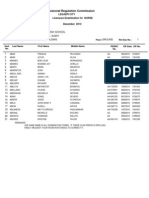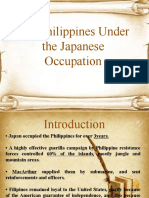0% found this document useful (0 votes)
453 views12 pagesThird Republic
The document summarizes key events and developments during the Third Republic of the Philippines from 1946 to 1957, including the inauguration of the Third Republic on July 4, 1946 marking independence, the administrations of Presidents Manuel Roxas, Elpidio Quirino, and Ramon Magsaysay, and their efforts to address the economic and social challenges facing the newly independent nation as it worked to establish its sovereignty and identity on the global stage.
Uploaded by
Erfuelua RuthCopyright
© © All Rights Reserved
We take content rights seriously. If you suspect this is your content, claim it here.
Available Formats
Download as DOCX, PDF, TXT or read online on Scribd
0% found this document useful (0 votes)
453 views12 pagesThird Republic
The document summarizes key events and developments during the Third Republic of the Philippines from 1946 to 1957, including the inauguration of the Third Republic on July 4, 1946 marking independence, the administrations of Presidents Manuel Roxas, Elpidio Quirino, and Ramon Magsaysay, and their efforts to address the economic and social challenges facing the newly independent nation as it worked to establish its sovereignty and identity on the global stage.
Uploaded by
Erfuelua RuthCopyright
© © All Rights Reserved
We take content rights seriously. If you suspect this is your content, claim it here.
Available Formats
Download as DOCX, PDF, TXT or read online on Scribd
/ 12






